BELLA ITALIA
A day in Pordenone with a Jozi chef abroad
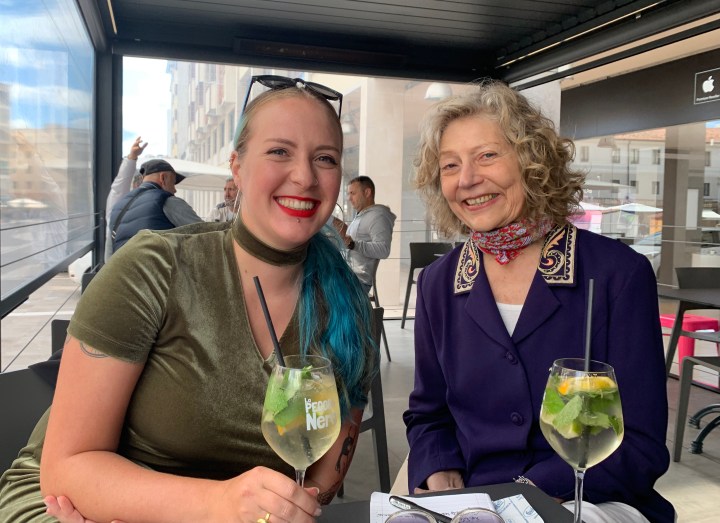
It turned out to be a very full gourmet day with Gauteng chef and food thinker, Lodemé Pendergraph, in Friuli-Venezia Giulia’s Pordenone.
Where’s Pordenone, people ask. About an hour and a half’s train ride from Venice, I say. It’s an hour by car. What’s there? That’s best answered with another question: Why is it there?
One of the old Venetian river cities, the remains of its old city wall still evident a few steps from Maxmara or any one of the other fashionable shops, it was once the cotton capital of Italy’s north. Historic boats loaded and emptied at this once-port on the still navigable river Noncello. The palaces on the main Corso (central street of the old city) are very like those seen in Venice from the main canal. Pordenone has always been full of its own delicious foods, particular to this cuisine besotted Italian region.
My sister Margot and I wait for Lodemé and her husband to meet us at the C13th Municipio or city hall at the bottom of the Corso. It features two pages atop the main tower, striking the famously sonorous bell hourly.
Today, Sunday, is not only the weekly passeggiata but also the day of the monthly summer antiques market, both always on the Corso. There’s always something on in Pordenone. A few weeks ago it was the national book festival, differently themed every year, and next week will be the Cine Muta, the international silent movie festival. The Corso is always decked out with flags of various events.
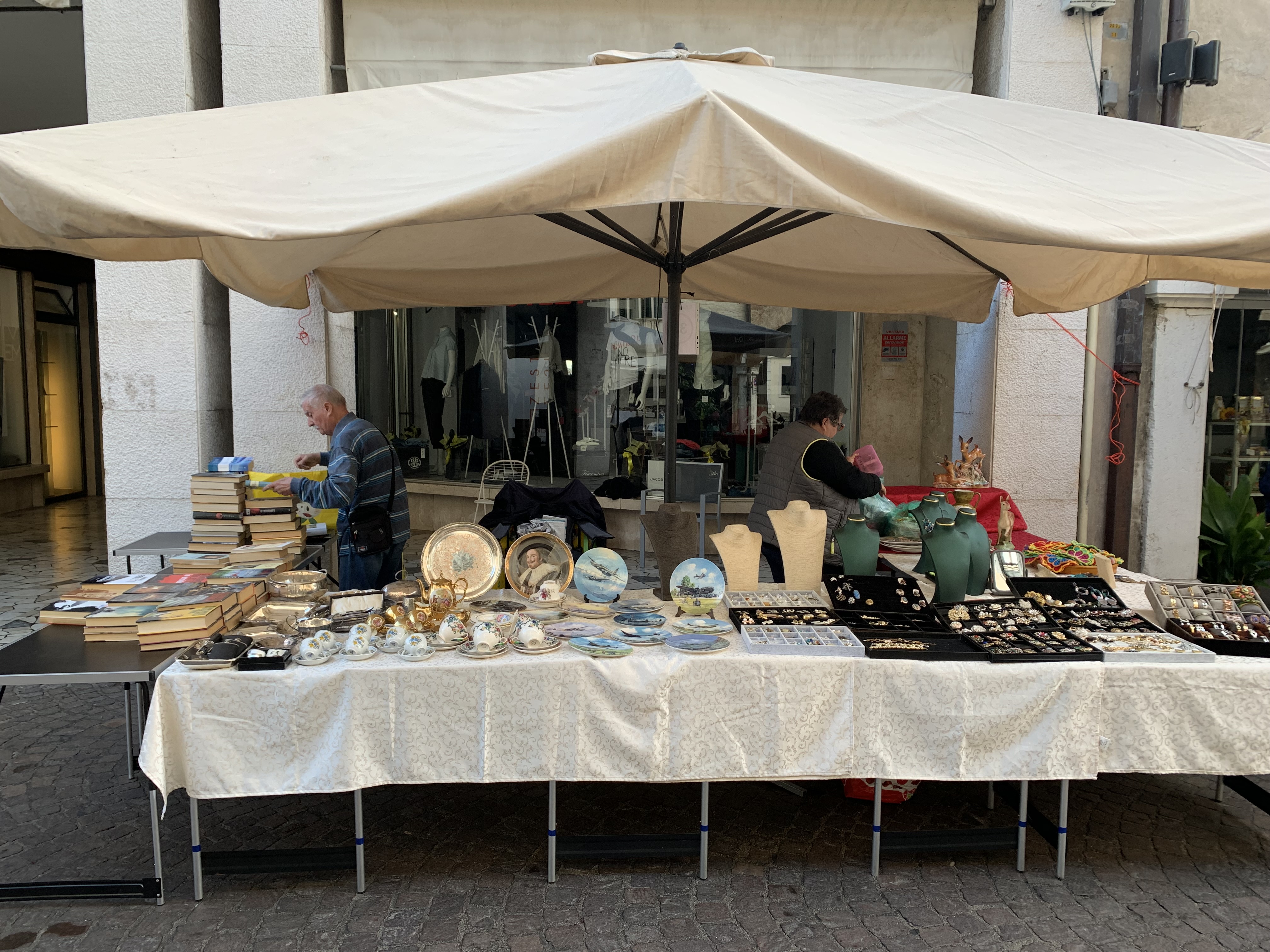
Today is the weekly passeggiata and also the day of the monthly antiques market. (Photo: Marie-Lais Emond)
Sunday is passeggiata day anyway, when Pordenone’s people come out at after-church time, to see and be seen carefully and slowly ambling the Corso, showing off their elegant families and beautifully kempt dogs, stopping for coffees, gorgeous snacks and the area’s prosecco.
Two people wave from a distance. Do Margot and I stick out that easily?
There’s a tall woman and a man in shorts. Well, he’s American. Lodemé is indistinguishable from the loveliest locals in an olive velvet dress, very little make-up except for perfectly red lips. Raymond Pendergraph is an electrical engineer on the American air force base at Aviano nearby and they live in the hills 20 minutes’ drive from there. “So I don’t have to see a single aircraft when I’m at home,” says Raymond.
I heard about Lodemé Pendergraph a few years ago from Hennie Fisher, leading “chef maker” of South Africa. Lodemé spent four years under this chef and culinary arts lecturer in the University of Pretoria’s Department of Consumer and Food Sciences.
She says frankly, “I detested Fisher in my early years.” That was until she realised she was learning a huge amount of invaluable and original material from him. “We didn’t just do food,” she explains to my sister. “We also learned from him the other things chefs should know, like managing budgets, pricing, kitchen management, quite a lot about the hospitality industry and lots about food sovereignty in Africa as well. Then I began respecting him. And that was before I realised Fisher was God’s gift (to our food industry). We even became house friends in the end and I was lucky enough to eat at the place in Pretoria he shares with AB Heyns.” The latter is a well-travelled gourmand.
We fall straight into talking about food. We’re bemoaning the fact that there are not many figs around in this fig season as we pass displays of fruit and vegetables. The Italian summer has been long and extremely hot so that could be the reason. Raymond says the town closest to them is Caneva, specially known for its figs, but he still hasn’t seen many this year.
“This place,” says Lodemé, stopping, “is where we should go for coffee if you like? As Raymond originally told me, ‘I found a place for you that’s liquid chocolate.’ It’s a must in Pordenone, if you know it.”
The entrance to Cioccolateria Peratoner is lined with chocolates on one side and patisserie of exquisite excellence on the other. The right hand side of the window today is full of pastries of a yellow theme. Some are golden, buttery, lemon pastel iced things, pumpkin coloured pastries, every sunny shade. A phenomenon. I’ve marvelled at the window displays many times but never been within.
Today Lodemé is taking us to a few of her favourite food places in Pordenone. My sister knows Pordenone well too but hasn’t collected places with as much of a food edge as has Lodemé.
Having qualified so well, she doesn’t cook very cheffy food these days. She’s not really permitted to work, as a US serviceman’s wife. However, she’s done quite a bit of catering and is settling more and more for a life whose food is informed by her experience and knowledge. She keeps herself very well updated. We talk about that and the science of food. The latter was part of the turning point in her degree.
“I’m fine with knowing and learning even more about all this. I can apply it to many areas of my life. When I left chef school I went to Phuket in Thailand with the intention of leading a chef’s life, and couldn’t get a job. I spoke to Hennie from there and he said something that surprised me: ‘Why don’t you teach English or something there for a year? It doesn’t have to be The Thing you’re passionate about. It’s just a year out of your life, to start experiencing travel and working out your life?’ I did. It was the best advice I’ve ever taken. I taught at the Kajonkietsuksa school there.
“I did travel and in Korea I met Raymond. We came to Italy together when he’d finished his US air force term there. Meanwhile I lived, ate and even spoke Korean. It’s not as difficult as people think because it has a regular type of alphabet, the kind westerners relate to.
“I shook off all the food foibles, farmed dogmeat etcetera. I was in another people’s country and I immersed myself in that food culture. Just because it’s different doesn’t mean I should judge it. Most chefs don’t have food fiemies (fussiness) anyway. We eat and try to appreciate everything and I’m no different. We still make a lot of Korean style food at home.”
Lodemé orders two hugely decadent coffees with stacked furls of chocolate cream for her and for Raymond. I see the word “canele” on the menu and order it with an espresso. The waitress tells me that the espresso comes with it. What I get is something more like an affogato. Instead of the ice cream is a small slab of excellent white chocolate buried in the glass. I’m puzzled but happy. My sister has the little snacks that come with prosecco she’s drinking for her photographer nerves. It’s the role she’s agreed on for today. My phone was stolen so this is a good solution and I get to include her in the day’s fun.
Pordenone has two Michelin-listed restaurants. One has just recently been listed and is the one Lodemé has booked for us. It’s an Italian-modern one, Sostansa, as opposed to the Italian-typical one of the area, La Ferrata.
But we’re a bit early and decide on an aperitivo before the meal at a bar Lodemé loves for its inclusion of South African wines. “Interesting ones, not the Bellinghams.” Maybe because of the fair, hers is closed. So is her second-best one. My sister recommends one in the city wall that goes down to a catacomb and that is shut too so we walk on, as the people are doing today.
Being quite a fashionable place, Pordenone’s passeggiata is always impressive. I see what people will be wearing this autumn. There is a certain long pleated skirt, just above the ankle, worn with platform tennis shoes, a white vest or short denim jacket for women. For men there are pale tartan waistcoats worn with tapered denims and grey tweed jackets.
The Pendergraphs chat briefly with another couple who are part of the exercise programmes that involve meals, for food charities, that Raymond’s been telling me about. They’re all about fun days and sometimes nights of cycling, running, hiking and eating at various interesting places throughout the area and well beyond. I’ve decided to find out about anything like it in South Africa.
Off the Corso is a parallel road a little less concerned with elegance and bella figura. Here we drop into chairs on a raised platform outside a more casual bar-coffee place. Lodemé recommends I have, instead of my go-to aperol spritz, a fiore di sambuco spritz. I didn’t know that was elderflower. So neither did I know that sambuca is made from elderberry and anise.
The spritz is beguilingly gentle. There’s a ruffle or ripple of commotion and then we see a waiter holding up two high-heeled feet in the doorway of the actual bar. Someone’s fainted, I imagine, but no, it’s the unthinkable, a drunk person. It just doesn’t happen, people agree. She must be American, they suggest. Her friend cowers around the other side of a pillar looking even worse for wear but not supine.
It interrupts our talk about very local, very seasonal foods, the only kind in these parts, and Lodemé’s own thoughts about kinder food preparation and how places like this lead many other less interested places in the world regarding responsible, natural, chemical free farming so that “organic” is never mentioned. It’s the common expectation.
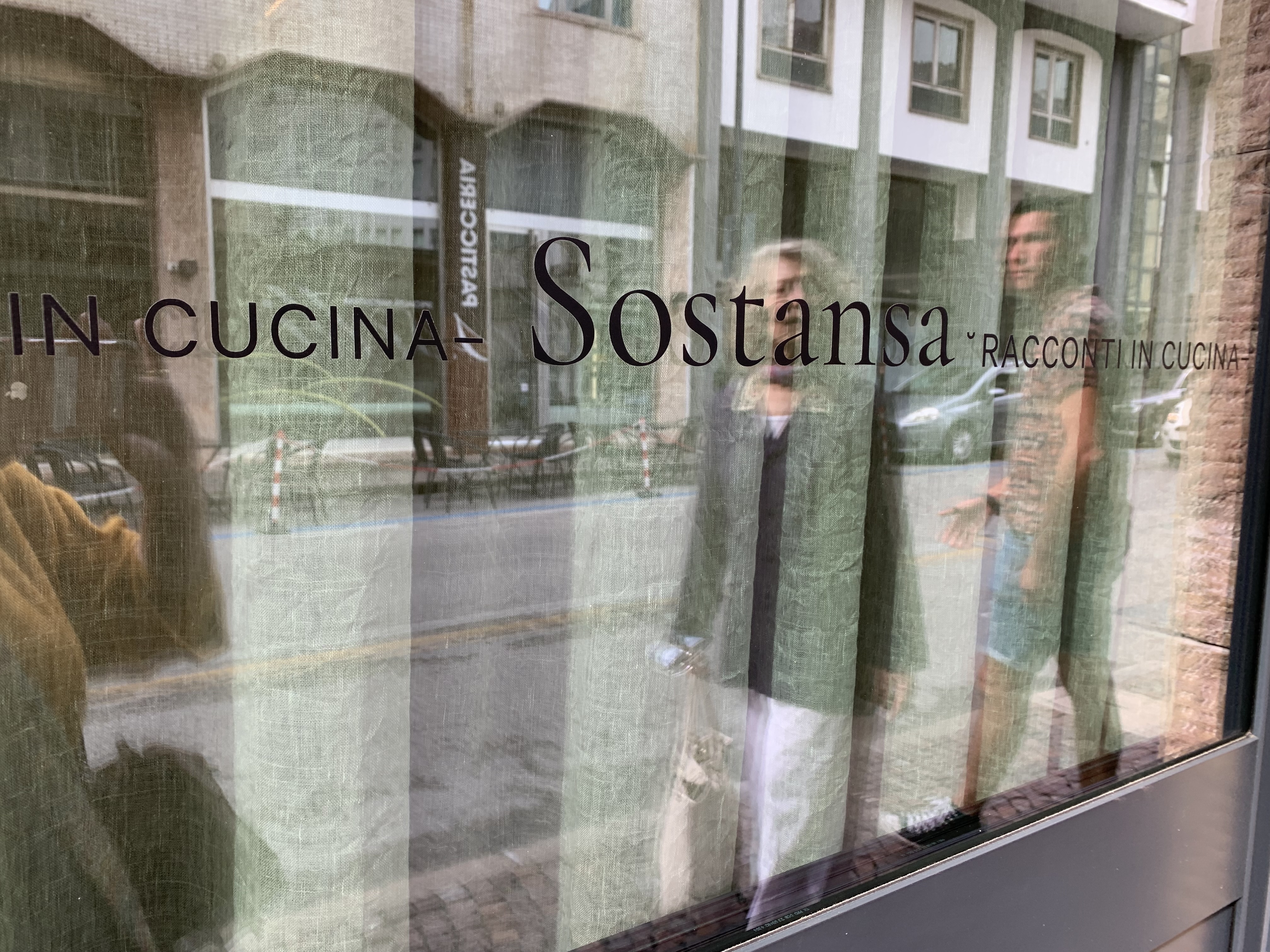
We see the clean-looking facade of Sostansa, the airy linen, metal and smooth stone. (Photo: Margot Patterson)
On these streets away from the Corso, it’s quiet and the people that are here aren’t really on parade. However, when we see the simply clean-looking facade of Sostansa, the new Michelin-listed restaurant, the airy linen, the clean metal and smooth wood, we start having a very good feeling about what the food will be like.
The menu is everything I hoped for. I realise I’d very willingly eat anything on it, especially since the selection is short. It features the main ingredients of each dish and supports them with little fuss, just finesse. Raymond is vegetarian and Lodemé doesn’t mind eating the same foods with him normally. She loves food restrictions and challenges anyway. I reckon in Italy, especially around these parts, it’s easy enough not to eat meat but not eating fish is trickier. He doesn’t eat fish either.
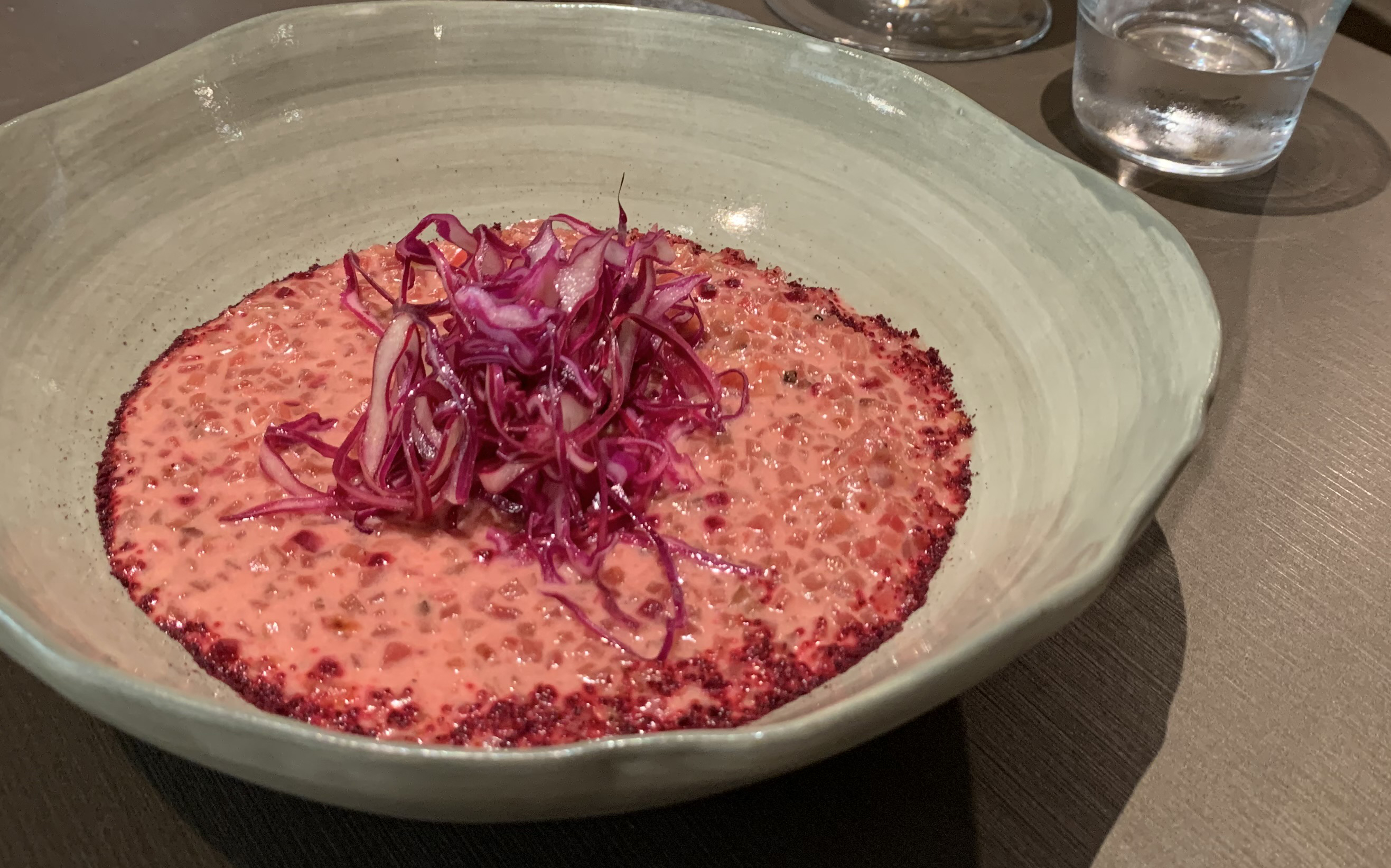
Vegetarian Raymond gets rapotto, based on the local turnips from Chioggia. (Photo: Margot Patterson)
He gets rapotto, served something like a risotto but with turnips from nearby Chioggia, with Cartizze prosecco sauce and lightly pickled and seasoned purple cabbage. This time Lodemé eats meat, the braised veal in her fresh tortellini with ginger, chives and real 50-year-old balsamic.
“We’re going back to Korea soon,” says Lodemé. Raymond is taking another US air force position there after his current term at Aviano is up.
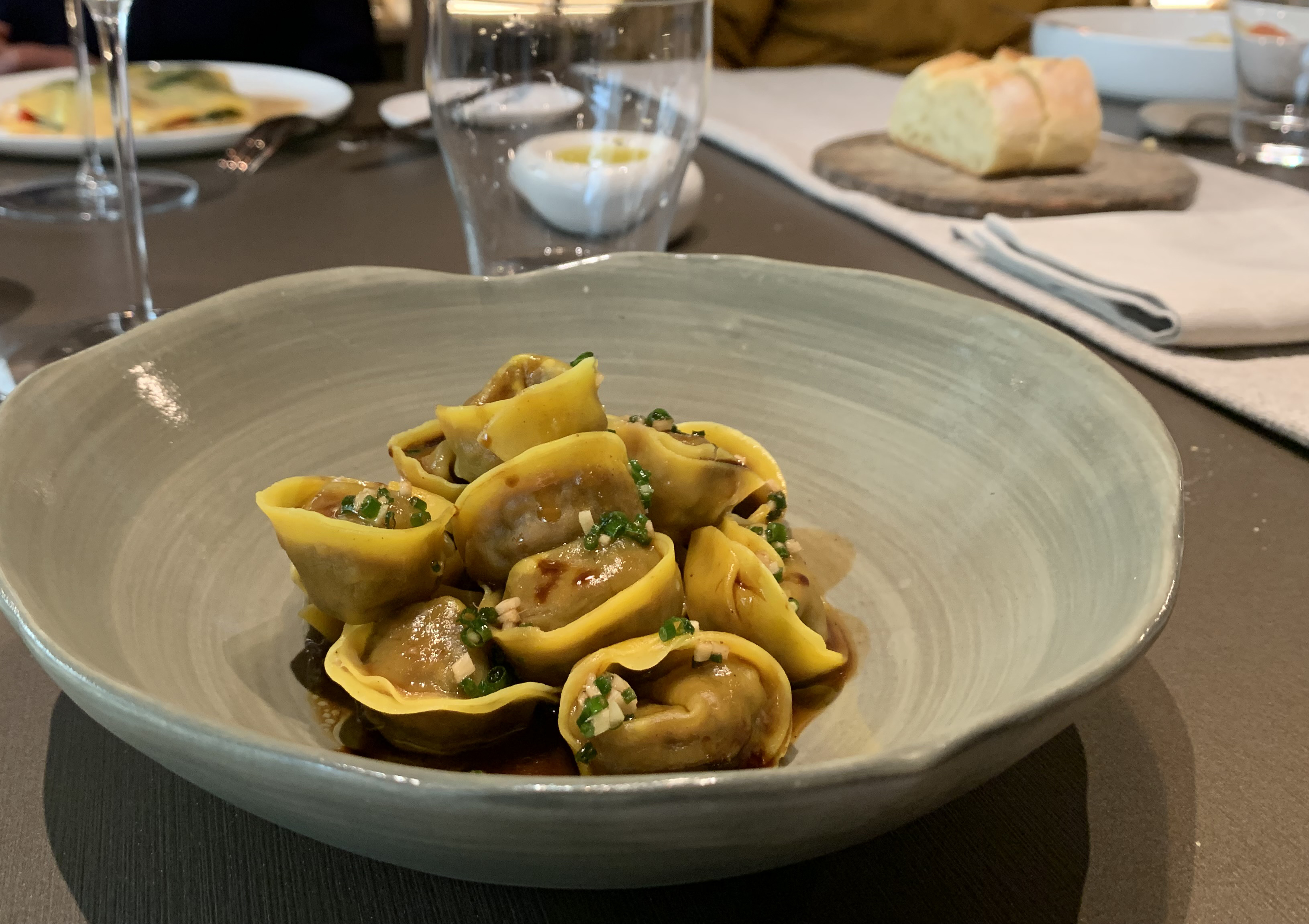
Tortellini of braised veal and ginger, chives and 50-year balsamic. (Photo: Margot Patterson)
Hennie Fisher said something to me about Lodemé’s international foodism: “She’s always been very interested and had a natural intuitiveness about cultural food – not just to cook it but to know food from specific cultures and cuisines and world foods. Just by chance I also taught a subject in her year called Cultural Eating Patterns and it was an absolute pleasure to have her in the class because she was so interested in the cuisines of the world.”
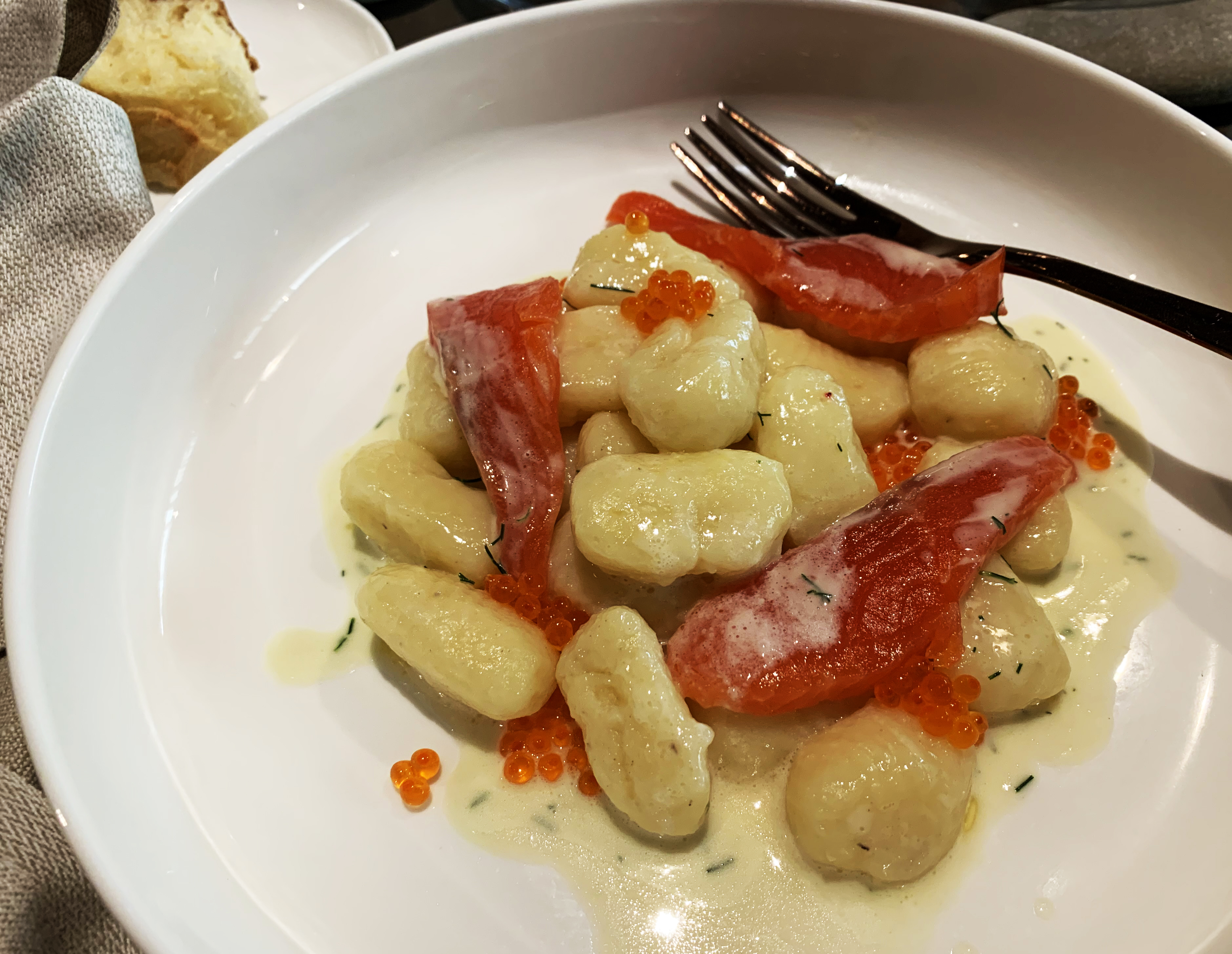
My gnocchi-loving sister has it made with red-skinned potatoes, sour butter, fennel, salmon trout and trout eggs. (Photo: Margot Patterson)
I see my sister has her favourite food of this area on her plate, potato gnocchi. Hers are made from the red-skinned potatoes, with sour butter, fennel, salmon trout and trout eggs. Mine is a big fresh raviolone over scampi, baby spinach and a shellfish reduction so good I can only envy the chef. Actually there are two chefs here that have worked together most of their shared career.
Will you chef in Korea, I ask?
“It’s not a must for me any more. We’re both very interested in anime and I might do something with that. Food is my background and position for much of my philosophy,” Lodemé says. It’s taught and still teaches me a lot. It is my individual strength in a way.
“Look at these dishes here. These chefs are obviously so experienced that they know how to rely on the best, fresh ingredients, seasonal stuff.” I say that what I love is the stories and information side. The manager and waitress have been happily telling us about where the ingredients come, where the grapes for the wine are grown. Our waitress also speaks quite a lot of English too, something unusual in these parts. One version of the menu is in English.
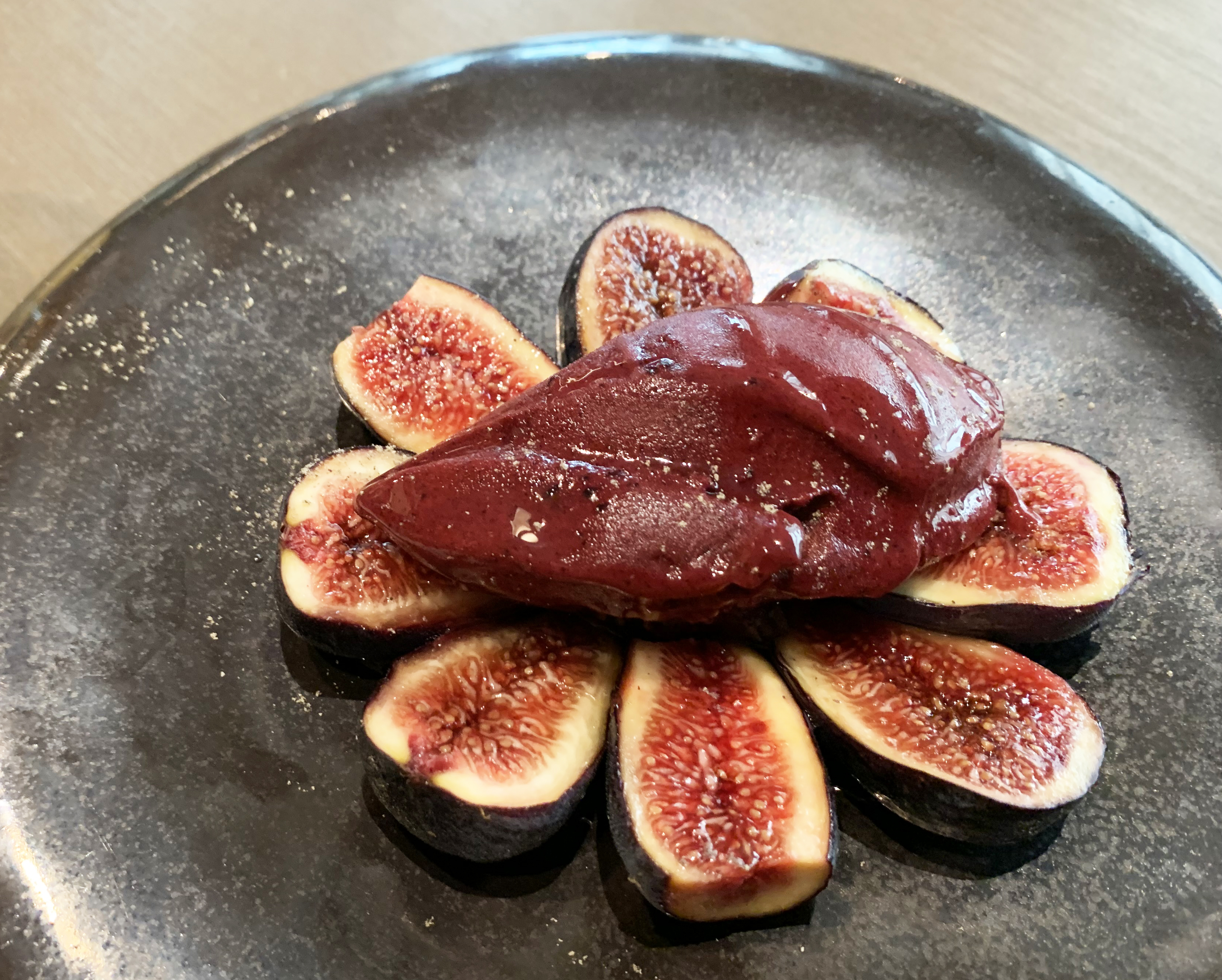
Moro figs from Caneva, thyme syrup, blueberry sorbet and black pepper. Bliss. (Photo: Margot Patterson)
My dessert is my bliss. I show Raymond the figs. They’re from his next door town, Caneva. The moro figs come in thyme syrup, with blueberry sorbet and black pepper.
I see my sister is excited about her blue cheese from Treviso with another favourite thing of hers, stupendous local bread. Lodemé has a beautiful box of Venetian biscotti with a custardy, creamy dip and brandy before her.
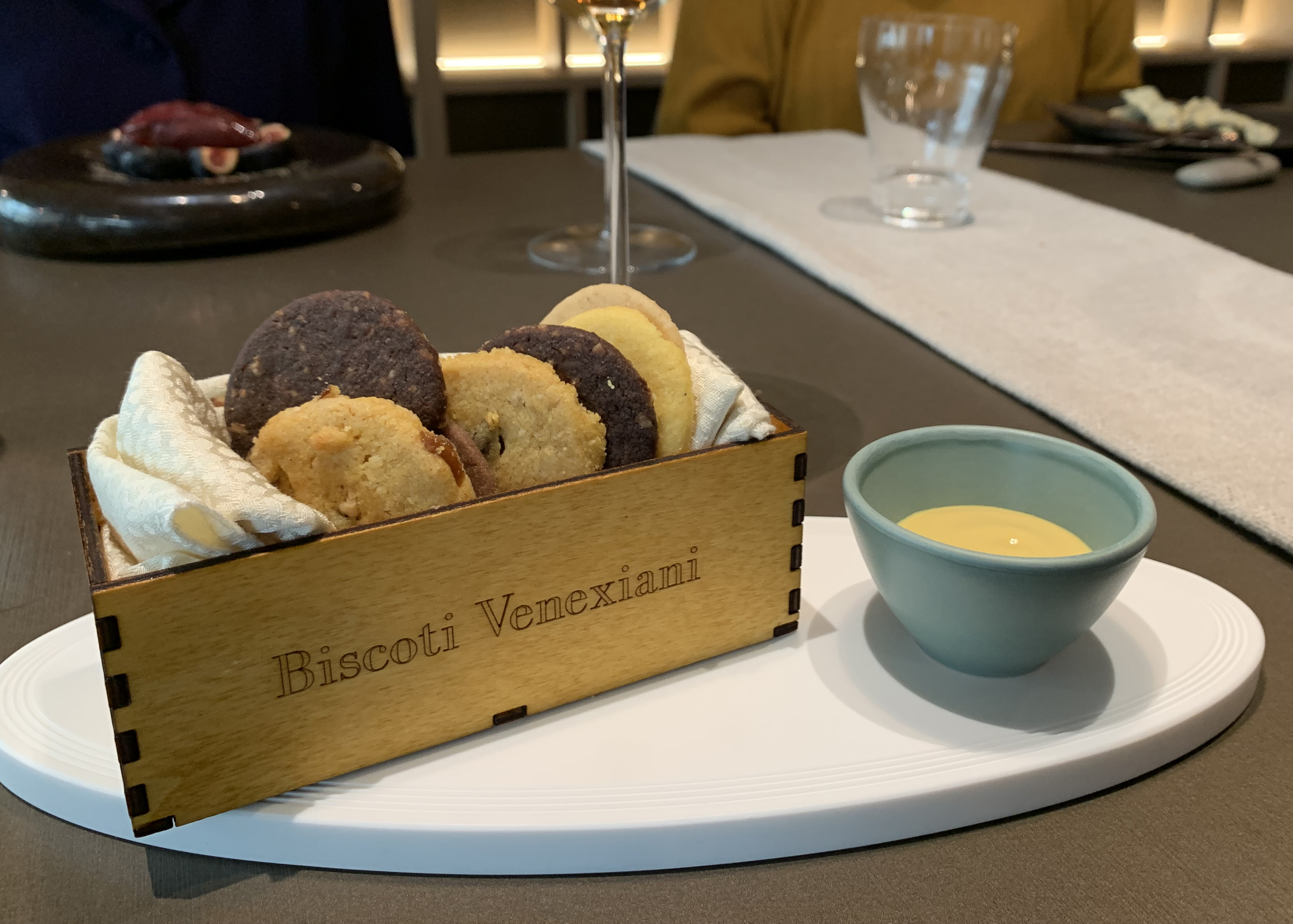
Lodemé has a beautiful box of Venetian biscotti with a custardy, creamy dip. (Photo: Margot Patterson)
We leave slowly, almost unwillingly. It’s been a memorable meal for all the loveliest reasons, not least eating it with Lodemé.
“What about one of my favourite gelatos?” she asks. Before we answer she says, “We should. We can try.” I’m already gauging how one scoop of something interesting could possibly be achieved from my side.
Outside the gelateria we find the siesta time is not yet over and the afternoon opening that goes into the evenings of all shops here is only starting at 3.30pm. We press our noses, straining to see through the glass at what gelatos are in store. The manager opens more than five minutes early. He doesn’t look particularly amused. Perhaps we were leaving nose marks on the door.
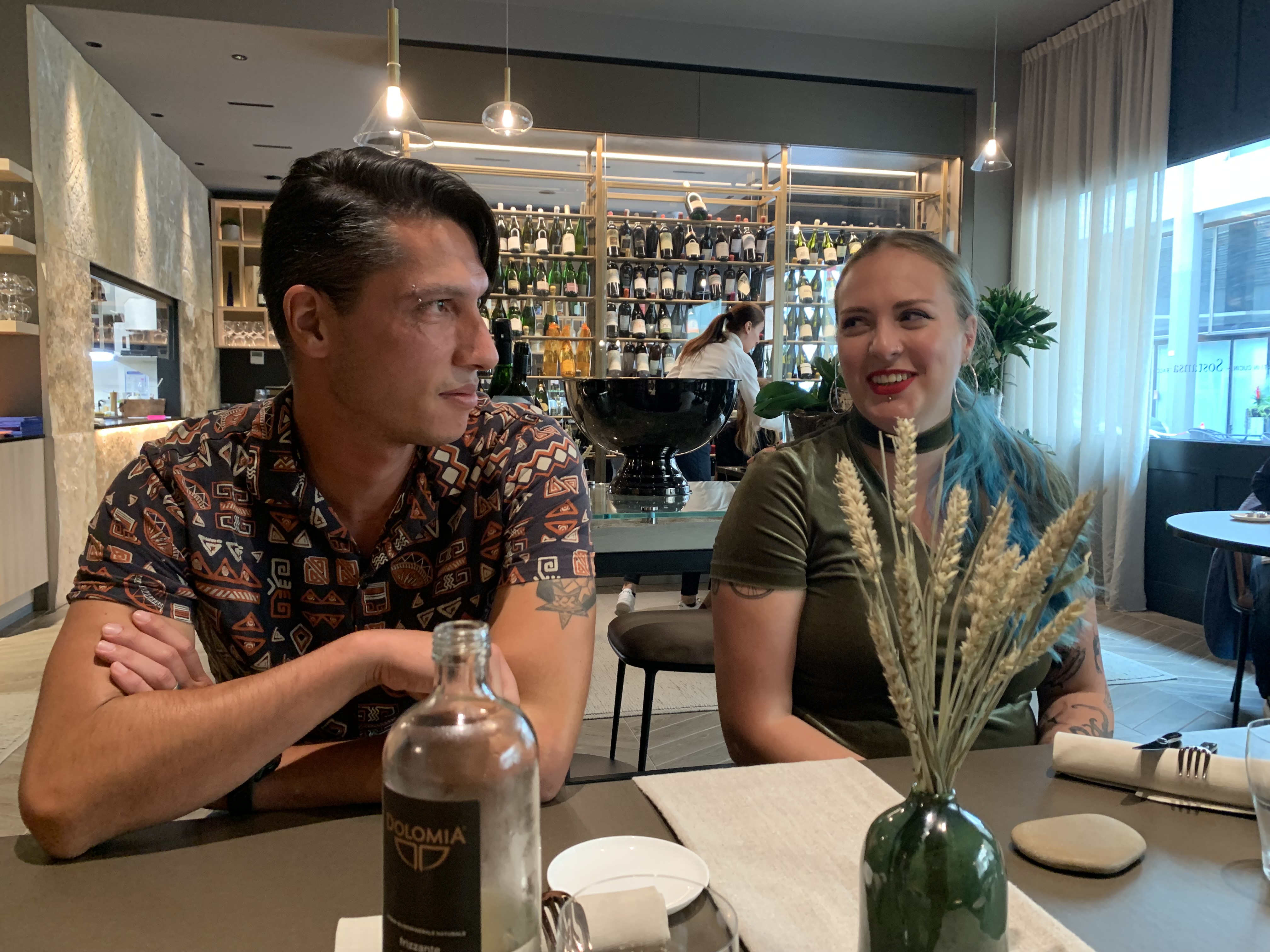
It’s been a memorable meal for all the loveliest reasons. (Photo: Margot Patterson)
All I know is that I have the typical gelato flavour everyone should have in Italy and I’ve not yet done so on this trip. It’s pistachio. It never ever tastes anything like this back home. The nuts are just optimally fresh and Italians understand them, says Lodemé thoughtfully, spooning her pale gelato elegantly. The rest of us are licking inelegantly but enthusiastically. It has turned out that we could all make this last gourmet effort of the day.
A few days later my sister meets up with both Pendergraphs at Venice airport. They’re making a quick trip to Stuttgart. Wearing matching pink hoodies. I bet there’s gourmet food within the trip. DM/TGIFood
The writer supports Nosh Food Rescue, an NGO that helps Jozi feeding schemes with food “rescued” from the food chain. Please support them here.






 Become an Insider
Become an Insider
Comments - Please login in order to comment.